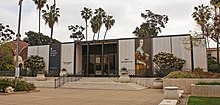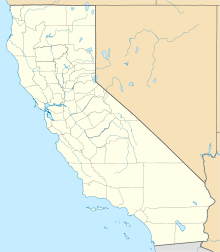Timken Museum of Art

Timken Museum of Art
|
|
| Established | October 1965 |
|---|---|
| Location | 1500 El Prado in Balboa Park in San Diego, California |
| Coordinates | 32°43′54″N 117°08′59″W / 32.7318°N 117.1496°WCoordinates: 32°43′54″N 117°08′59″W / 32.7318°N 117.1496°W |
| Type | Art Museum |
| Founder | Timken family, Anne and Amy Putnam |
| Director | Megan Pogue |
| Website | timkenmuseum.org |
The Timken Museum of Art is a fine art museum, established in 1965 and located at 1500 El Prado in Balboa Park in San Diego, California, close to the San Diego Museum of Art. It is the only Balboa Park museum with free admission.
The groundwork for the museum was laid in 1951 when Walter Ames helped sisters Amy and Anne Putnam to form the nonprofit Putnam Foundation to own and manage their art collection. The sisters had settled in San Diego in the early 20th century and made donations to the San Diego Museum of Art in its early years. At first the Foundation loaned items from its collection to noteworthy museums across the United States. When the Timken Museum opened in 1965, the Putnam Foundation Collection provided its initial material and Walter Ames became its first director.
The museum building stands on the site of the former Home Economy Building, originally designed for the 1915 Panama-California Exposition and later known as the Pan-Pacific Building, the Cafe of the World, and the American Legion Building. That building was torn down in 1963 and replaced by the Timken Museum, which was designed by the architectural firm of Frank L. Hope and Associates and funded by the Timken family. The museum is a white, modern building in marble and bronze housing a five-room gallery.
Shortly after the museum opened, John Walker, of the National Gallery of Art, praised its collection, some of which had been on loan at his institution until the Timken neared completion:
"It is one of the finest small museums I have ever seen...I congratulate you on the discrimination shown. You have been wise. Some cities have built large museums, and then hoped that innumerable works of art of true excellence would miraculously appear. I am afraid they won't any longer. Money is not the problem. The problem is to find pictures to buy. I can't replace those which have come to San Diego. Paintings like these are virtually unavailable at any price."
The museum displays European old master paintings, sculptures, and tapestries under natural light. Supplementing the European holdings are collections of American painting and Russian icons.
...
Wikipedia



